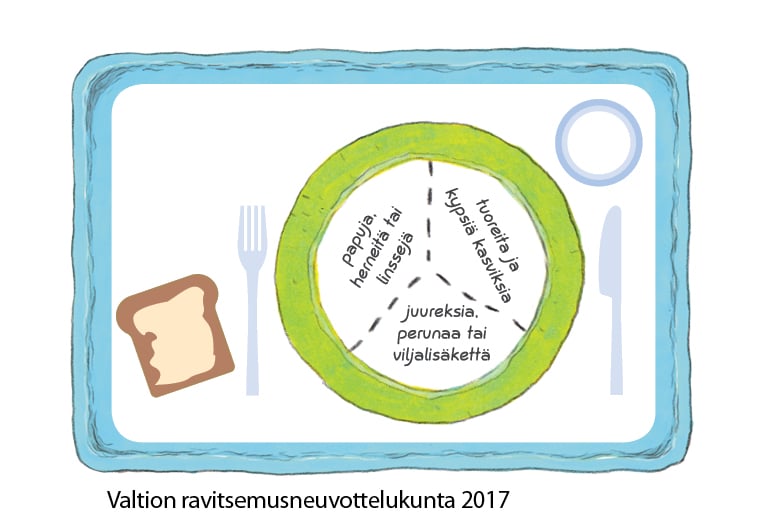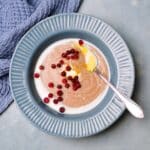Like in many other developed countries, there is a significant portion of the population that struggles with obesity and related health issues. Let's see what the studies say about how Finnish people eat.
What do foreigners, in general, think we eat? The image is that our diet is high in whole grains, fish, berries, and vegetables and that the Nordic diet is associated with a number of health benefits, including a lower risk of cardiovascular disease, cancer, and type 2 diabetes.
This would be the case if we would eat enough of all the things our forests have to offer. Sadly, the consumption of fast foods and unhealthy processed foods has increased. The consumption of vegetables and fruits is higher than in history; this is due to the availability of fresh produce all year round.
Finnish diet recommendations
The Finnish institute for health and welfare has published recommendations on how to eat healthily. These recommendations are based on the culture, so they might look a bit different than the recommendations in your country.
Below is the Finnish food triangle. This is the staple of how kids from a young age are taught to eat at school.

Below is the plate model. Half of the plate should be filled with vegetables. ¼ with carbohydrates like whole grain pasta, whole grain rice, or potatoes. Whole grains are also presented in the form of rye bread. ¼ of the plate with protein, for example, fish, chicken, or beans. Dessert consists of berries or fruit. The drink is low-fat/ fat-free milk.

Below is a picture of a recommended plate model for an elderly person. As you see the berries are in the form of kiisseli, which is an easy-to-eat dessert, and very traditional for the elderly.

There are also recommendations on how a vegan plate could look like. Below is the published image. ⅓ fresh and boiled vegetables, ⅓ beans, peas or lentils, ⅓ root vegetables, potatoes, or whole grains. As a drink, plant milk, fortified with calcium.

If you have the interest to read in detail the Finnish nutrition recommendations you can access them in English here. In ruokavirasto site you can read in detail recommendations for different age groups and for special dietary needs.
FinRavinto Study
To get a deep dive into how people eat in Finland, the Finnish institute for health and welfare has done studies over the years. The most recent large one in from year 2017. This study was a part of the EU Menu study.
Here are some results in a nutshell:
- Overall, people eat very little vegetables and fruit. Most people do not eat the recommended 500 grams a day.
- 70% of people do not eat enough fiber.
- Men eat too much red meat and processed meats.
- Saturated fat consumption is on the high end.
- 9 of 10 people eat too much salt (recommended amount max 5g/day)
Only 22% of women eat vegetables, fruits, and berries the recommended amount, and of men, only 14%. Highly educated people eat more veggies. The consumption of vegetables and fruits is lower in the year 2017 than in the year 2011 when the study before was done.
To reach the minimum recommendation of 500 grams of vegetables a day, women would need to eat 80 grams more and men 140 grams more on average.
Red meat consumption is recommended to keep below 500 grams a week. Finnish men eat over 700 grams of red meat and processed red meat products a week. 79% of men eat too much meat, and 26% of women do.
Finns eat enough protein and unsaturated fats. The consumption of saturated fats is high. Only one person of 20 managed to be within the recommended limits. Two-thirds of the population do not eat enough fiber.
What about vitamins? On average not enough consumption of vitamins A and D and folate and thiamine. Women do not eat enough Iron.
One positive thing is that Finns do get enough Iodine, since this was a problem in the history. Nowadays Iodine is for example added to table salt. We also do like to drink water, since we get it fresh from the tap. Sugary sodas are rarely served with lunch and dinner.
Typical diet
Breakfast: A typical Finnish person's diet may include a breakfast of cereal, yogurt, or porridge, with coffee or tea. Open-faced sandwich is the most regular breakfast for many. Rye bread is liked by most Finns. We put butter, cheese, a piece of ham/ meetwursti on top, and even cucumber or tomato slices. Omelet or scrambled/cooked egg is loved by many. Roasted bacon is a weekend treat. Orange, or apple juice is also served in many homes.
Lunch: Luch depends much on the type of work. Examples of lunch we eat are quite the same as we could serve as dinner. Traditional warm lunches could be for example meatballs with mash, fish with potatoes and salad, macaroni casserole, salmon soup with a slice of archipelago bread, pasta bolognese, creamy garlic potatoes with meat, rice and curry chicken sauce, pea soup and pancakes.
Snacks: Sandwiches are regular snack. On the coffee break, we love a piece of pulla with coffee. In kindergarten and schools sandwiches, kiisseli, yogurt and fruits is a common afternoon snack.
Dinner: Dinner is many times quite similar to the foods that could be served for lunch. We love different types of casseroles. Many like multicultural foods, so Italian, Thai, Greek, Spanish, Mexican, Indian type of foods are prepared my many for dinner.
Evening snack: An evening porridge for kids is quite common. Sandwiches, yogurt, rahka with berries, a milk pudding, chopped veggies like carrots with dip, smoothie, spinach pancakes, carrot pancakes, fruits are common evening snacks we eat before bedtime.
Meal times
On average Finns eat a sturdy breakfast. Lunch is eaten quite early, around 11-12 am. At schools and kindergarten kids eat a warm free lunch. Finn study tells that 38 percent of women have a packed lunch for work and 25 % of men do. Many eat out at lunch restaurants and at some work places there are own lunch restaurants.
An afternoon snack is common. Kids eat this at daycare and also in some schools. Adults have a "kahvitauko", coffee break usually around 14 pm to have a cup of coffee and some snack.
Dinner is usually prepared after work day and eaten between 17-19 pm. Even evening snack is eaten depending on schedules between 19-22.
Are Finnish people fit?
Finland has a strong culture of outdoor activities such as hiking, skiing, and biking. The studies tell though that we do move our bodies too little. The most common form of activity is walking, on average a typical working age Finn walks around 7200-7500 steps a day.
If you are keen on finding out more about the reports of Physical activities of Finnish people you can read more about them at UKK Institute.
























Leave a Reply